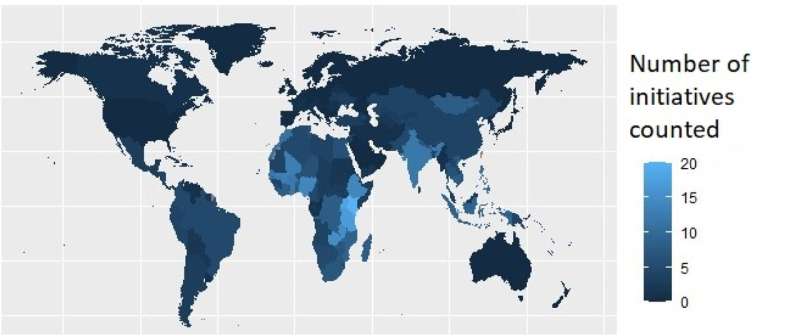Technology transfer deficits jeopardize climate targets

Many developing countries have made their nationally determined climate contributions submitted under the Paris Agreement conditional on receiving climate finance, technology transfer, and capacity-building support. However, developed countries have so far failed to deliver tech transfer to the extent promised. According to a new study in Energy Policy, public-private partnerships and other energy initiatives can only partially make up for this shortfall. While their role in supporting the growth of low-carbon energy systems in the Global South is proving crucial, their contribution in terms of technology transfer is insufficient.
Developed countries have pledged to provide US$100 billion annually from public and private sources for climate finance starting in 2020. Technology transfer is an important part of this: While developing and emerging countries need climate finance to build out clean energy solutions, knowledge is pivotal to harnessing their benefits.
This has not been achieved to date—and not only because climate financing is lacking. "Most patents for low-carbon technologies are held by companies in the Global North. This gives them a significant competitive advantage. They only share their knowledge when it is beneficial for them," explains co-author Andreas Goldthau (IASS/University of Erfurt). China is the only emerging market that has successfully attracted technology transfer through foreign direct investment. In order to tap into the Chinese market, companies were willing to "transfer" their technologies, i.e. share their knowledge.
China's recipe for success is not easily transferable
China's success in building a low-carbon technology sector can be broadly attributed to the high innovation capacity of Chinese industry as well as various policy measures. "These include the promotion of joint ventures and knowledge transfer, but also local content requirements that compel foreign investors to use products or services made in China. China was able to push through these measures by leveraging its large and profitable market," says lead author Silvia Weko (IASS/University of Erfurt). In other developing and emerging economies, similar efforts have proven ineffective or even counterproductive.
There, foreign investment in low-carbon energy systems and associated knowledge transfer remains critically insufficient. As a consequence, many developing countries continue to invest in predominantly fossil fuel technologies. There are concerns that countries may become locked in to high-carbon energy systems as a result.
A stronger focus on promoting low-carbon technology transfer is needed
What options are available to countries that want to increase the transfer of technology but are unable to achieve this through market mechanisms or policy? Technology transfer initiatives, such as public-private partnerships or platforms like the United Nations Climate Technology Center and Network (CTCN) work to advance energy transitions in the Global South. Such initiatives were intended to fill the gap in the market, but their track record is mixed, according to the IASS researchers' analysis.
Weko and Goldthau identified 71 initiatives that include technology transfer among their goals. Many of these are active in countries where only a small proportion of the population has access to electricity. Their efforts to support the development of sustainable energy systems in these countries are largely successful. However, just 26 of the 71 initiatives studied actually pursue technology transfer activities.
In order to increase knowledge transfer to developing countries and emerging economies, industrialized countries must keep their funding promises and provide greater support to the United Nations Climate Technology Center and Network, the researchers argue. The transfer gap cannot be closed with the current patchwork approach. Trade and regional cooperation also offer opportunities for countries to pool resources and demand in order to negotiate better terms.
More information: Silvia Weko et al, Bridging the low-carbon technology gap? Assessing energy initiatives for the Global South, Energy Policy (2022). DOI: 10.1016/j.enpol.2022.113192



















